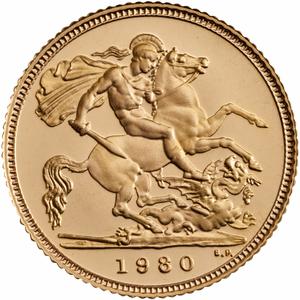Information about effigy: St George the Dragon-Slayer

Saint George (Greek: Γεώργιος, Geṓrgios; Latin: Georgius; died 23 April 303), also George of Lydda, was a soldier of Cappadocian Greek origins, member of the Praetorian Guard for Roman emperor Diocletian, who was sentenced to death for refusing to recant his Christian faith. He became one of the most venerated saints and megalo-martyrs in Christianity, and he has been especially venerated as a military saint since the Crusades. In hagiography, as one of the Fourteen Holy Helpers and one of the most prominent military saints, he is immortalised in the legend of Saint George and the Dragon. As a highly celebrated saint in both the Western and Eastern Christian churches, Saint George is connected with a large number of patronages throughout the world, and his iconography can be found on the flags and coats of arms of a number of cities and countries. In his aspect as a saint protector of a country, he can be seen on the Medieval coinage of Serbia and Bulgaria. In his military aspect as a dragon slayer, his depiction can be seen on Russian coins from the 16th century onwards, up to modern circulating and bullion coinage. In England, the cult of St George pre-dates the Norman conquest. Later, King Edward III (reigned 1327 - 1377) was known for promoting the codes of knighthood and in 1348 founded the Order of the Garter. During his reign, George came to be recognised as the patron saint of the English monarchy. The most famous depiction of St George slaying the dragon is on British sovereign coinage, with the classic design by Benedetto Pisrucci still issued today, more than two centuries after it was created. |

St George the Dragon-Slayer on British gold coinage United Kingdom / Half Sovereign 1980 (Proof only) This classic design has been used on various Sovereign denominations for more than two centuries. |
|

